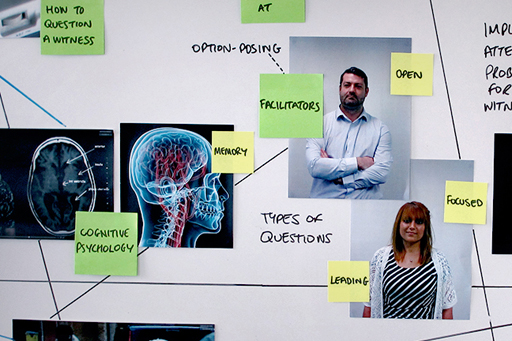3.5 Types of questions

When assessing the interviews that DI Bullet and DS Sund conducted with the two witnesses, it will be important to consider the types of questions used by the detectives. Below are a list of different question types, some ‘good’ and some definitely ‘bad’.
Leading questions
Leading questions tend to strongly suggest what response is expected, and/or assume details that have not been provided by the witness. An example would be asking a witness to a robbery to describe how the perpetrator punched the victim, when the witness has not yet mentioned any physical contact with the victim. Such questions are inextricably linked to the phenomenon of suggestibility. Leading questions are seen as particularly problematic by both psychologists and lawyers in terms of the limited value they can add (and damage they can do) to a witness’s account. They can also damage the credibility of the witness’s statement. When using leading questions, the possibility that the witness is not answering from memory at all, but is simply repeating information contained in the question, cannot be discounted.
Open questions
Open questions are those that seek an open-ended response from the witness, and that do not limit, focus or direct the witness’s response except in the most general way. ‘What happened?’ is an example of an open question, which requires information to be recalled, but does not prescribe the witness’s response in any specific way, and because of this, is more likely to get the most accurate information. Most of the ‘Wh-’ questions – what, when, where and who – would be classified as open questions. Lamb and colleagues (2001) have found throughout their studies of child witness interviews that open-ended questions lead to responses that are three to four times longer, and three times richer in relevant details, than responses to other types of questions.
Facilitators
Facilitators are non-suggestive verbal or non-verbal prompts that encourage the witness to continue recalling. Facilitators such as ‘okay’ and ‘hmm’, are designed to encourage the witness to continue their account. Since they, too, are non-leading and non-specific, they can also be effective at maintaining the witness’s narrative without decreasing the accuracy of the account.
Focused questions
Focused questions are ones that focus the witness’s attention on specific details or aspects of the event that the witness has previously described. They may be open-ended or cued invitations to recall specific information. For example, ‘Tell me what the girl looked like’ is an example of a focused question, as long as the person being interviewed has mentioned the girl already, but not what she looked like. Focused questions may increase the number of details provided by the witness, but if they are used too much they can reduce the accuracy of the witness’s account overall (particularly if the witness feels obliged by the question to provide details that they have to guess at just to please the interviewer).
Option-posing questions
Option-posing questions generally limit the response the witness can give to specific options, and usually focus on aspects of the event that the witness has not already described. Option-posing questions involve recognition, such as ‘Was she running or walking?’. They limit the response the witness can provide (here, to ‘running’ or ‘walking’), and are also likely to focus on aspects of the event that the witness has not already mentioned. In this way, they may also be considered ‘leading’, but the term leading question is usually reserved for questions that strongly suggest what response is sought from the witness, or assume details that the witness has not yet provided.
